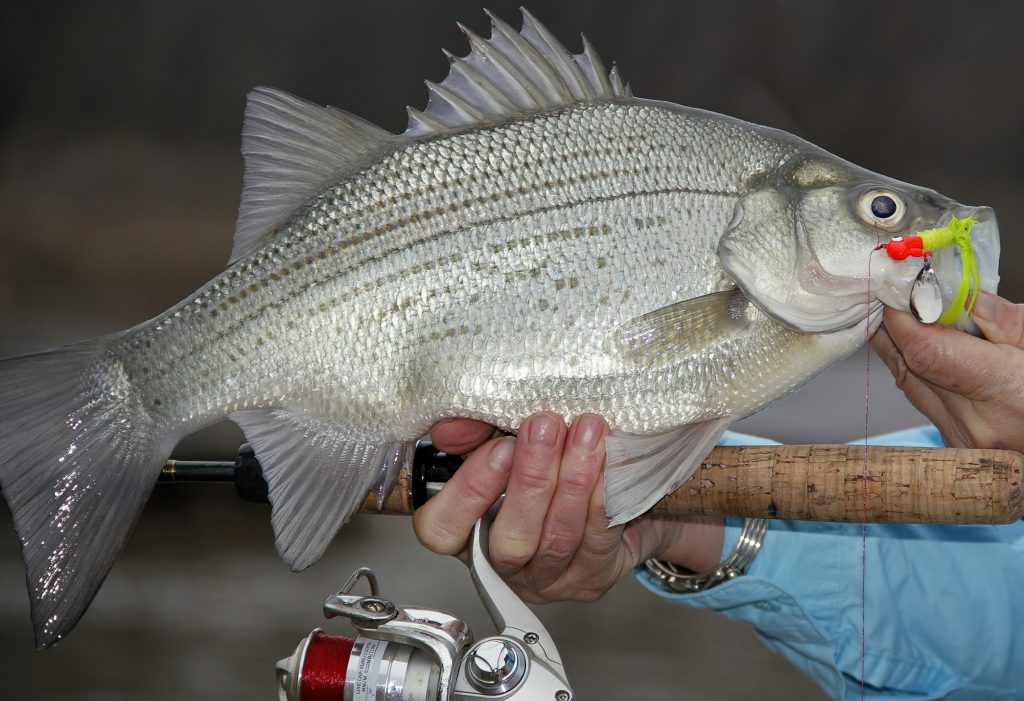White bass, also known as sand bass or silver bass, are a popular freshwater game fish found in rivers and lakes throughout the United States. Known for their aggressive behavior and acrobatic leaps, they provide an exciting challenge for anglers of all skill levels. If you’re looking to target these fish, here are some tips and techniques to help you have a successful trip.
Location and Timing
White bass can be found in a variety of freshwater environments, including rivers, lakes, and reservoirs. They tend to congregate in large schools and are often found near the surface in the early morning and late afternoon. During the heat of the day, they may move deeper into the water column.
To increase your chances of catching white bass, it’s important to understand their behavior and the best times and locations to target them. White bass tend to be most active during the spring and fall when water temperatures are cooler. They also tend to be more active during low light conditions, such as early morning or late afternoon.
One key to finding white bass is to look for areas with current, such as near dam spillways or in river channels. They also tend to feed near drop-offs, underwater points, and other structure, so be sure to keep an eye on your fish finder for signs of activity. When fishing in lakes or reservoirs, focus on areas with submerged vegetation or areas where the water depth changes rapidly.
It’s important to note that white bass are often migratory and may move throughout a waterway depending on the season and water conditions. Be sure to do your research and talk to local anglers or fishing guides to determine the best locations and timing for catching white bass in your area.
Tackle and Gear
When it comes to gear, a medium to light action rod and reel with 6 to 8-pound test line is ideal for white bass. Some anglers prefer to use ultralight tackle for a more challenging fight. Regardless of your setup, be sure to use sharp hooks and change them frequently to ensure a good hookset.
Popular lures for white bass include jigs, spinners, and crankbaits. Small inline spinners in white or silver colors can be particularly effective, as they mimic the natural prey of white bass. Crankbaits that mimic shad or other baitfish can also be effective, especially when retrieved quickly to create a reaction strike.
Live bait can also be effective, particularly minnows or shad. When using live bait, be sure to keep it lively and change it frequently to keep it fresh.
Techniques
Catching white bass requires skill and patience, but there are several effective techniques that can help you land these fish. One popular technique is to cast your lure or bait upstream and let it drift naturally with the current, keeping an eye out for drop-offs or other structures where white bass may be lurking. Another approach is to target schools of feeding fish and retrieve your bait quickly to create a reaction strike.
In addition to these techniques, white bass can also be caught using trolling, fly fishing, and bottom bouncing. Each approach has its own set of challenges and requires different equipment and strategies, so it’s important to experiment and find what works best for you.
Regardless of the technique you choose, it’s important to be patient and persistent. White bass can be finicky and may require some trial and error to figure out what they’re feeding on and what techniques they respond to. With practice and a little luck, however, you can hone your skills and become a successful white bass angler.
Final Thoughts
Catching white bass can be a fun and rewarding experience for anglers of all skill levels. By using the right gear, targeting the right locations, and employing effective techniques, you can increase your chances of success. Remember to always follow local fishing regulations and practice catch-and-release to help preserve this valuable freshwater resource for future generations.

